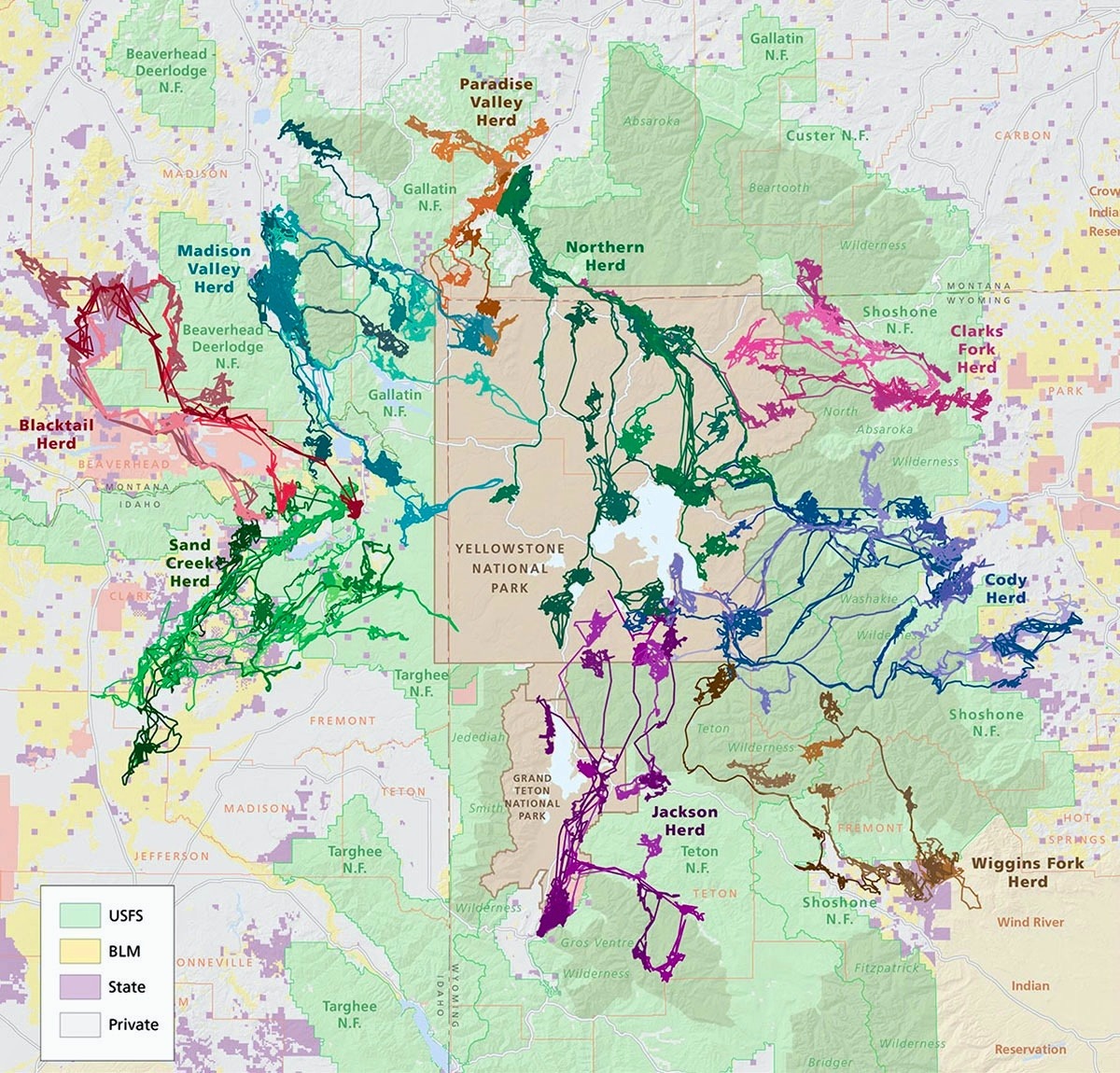This elk migration map, produced by the Wyoming Migration Initiative, shows the seasonal movements of a dozen different wapiti herds in Greater Yellowstone. There are other maps showing how mule deer, pronghorn and other species migrate, too. The reason why such migrations can still occur in Greater Yellowstone is because the landscape remains conducive to long-distance travel; in most of the Lower 48 species have either been lost or migratory populations have dwindled because of fragmentation caused by natural resource extraction and private land development. Image courtesy Wyoming Migration Initiative

